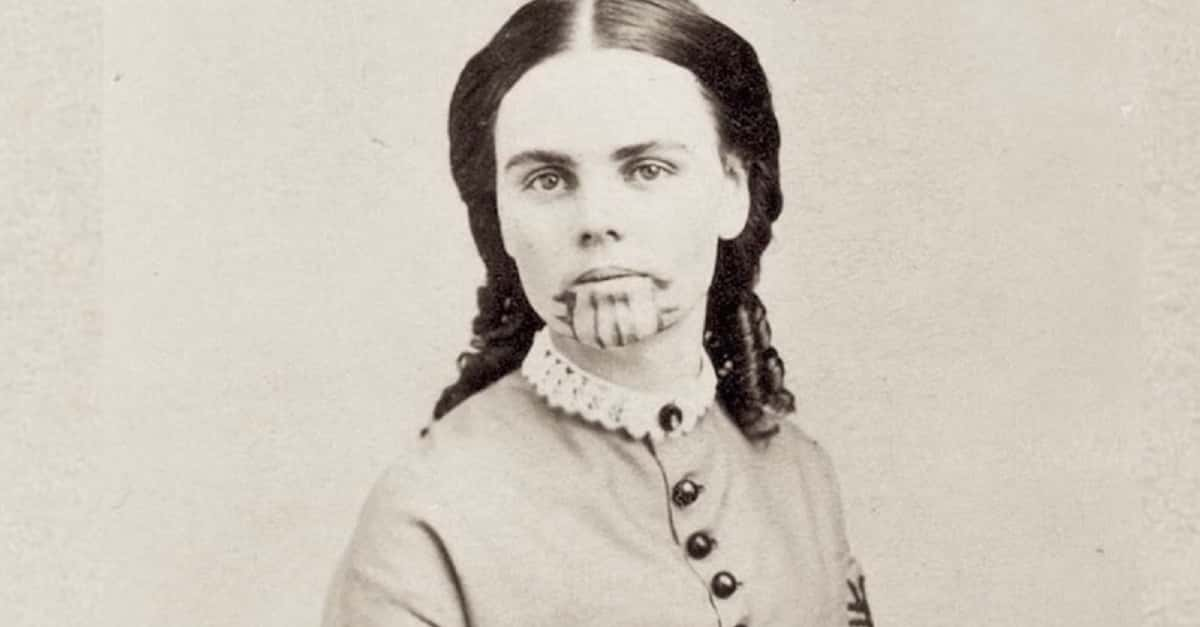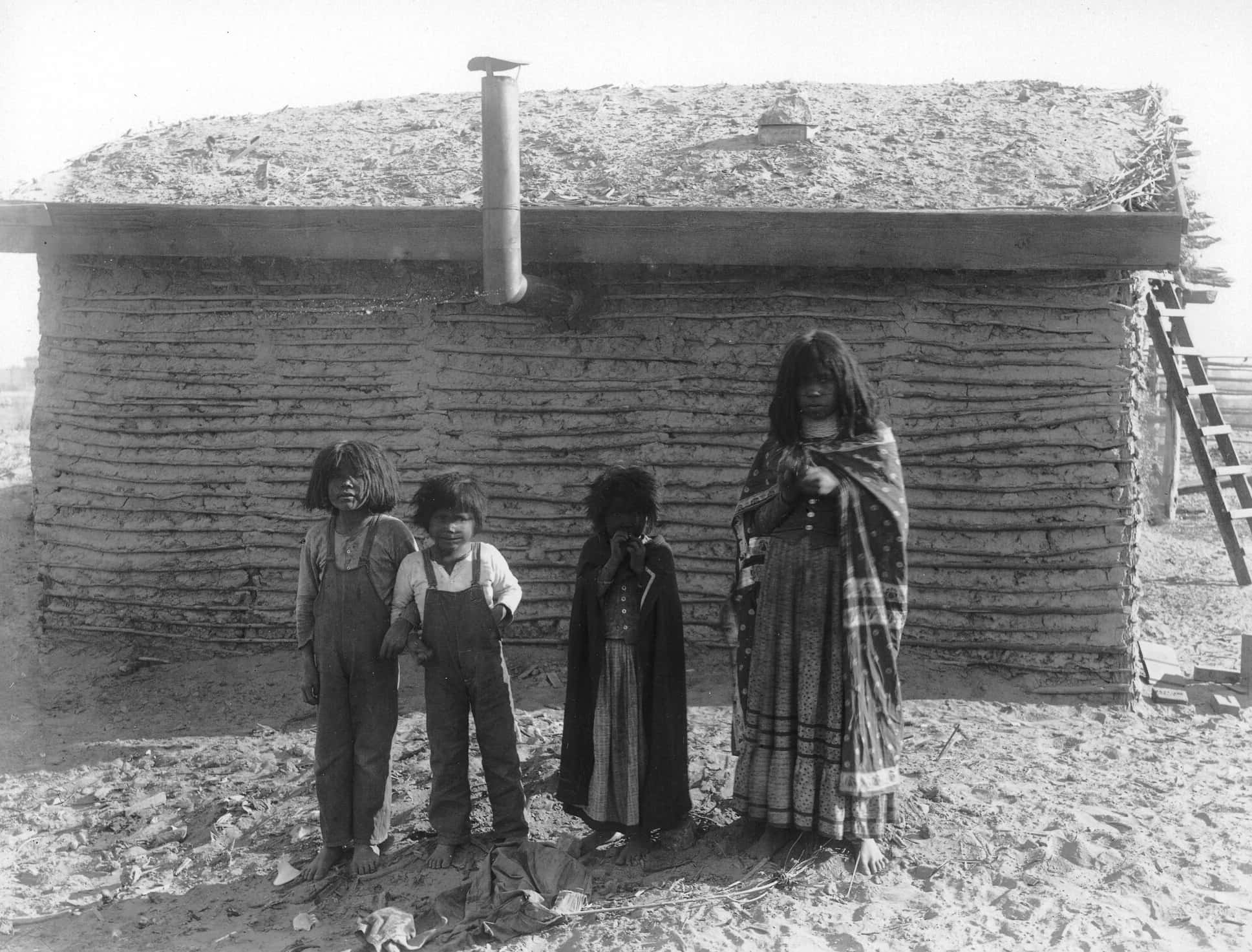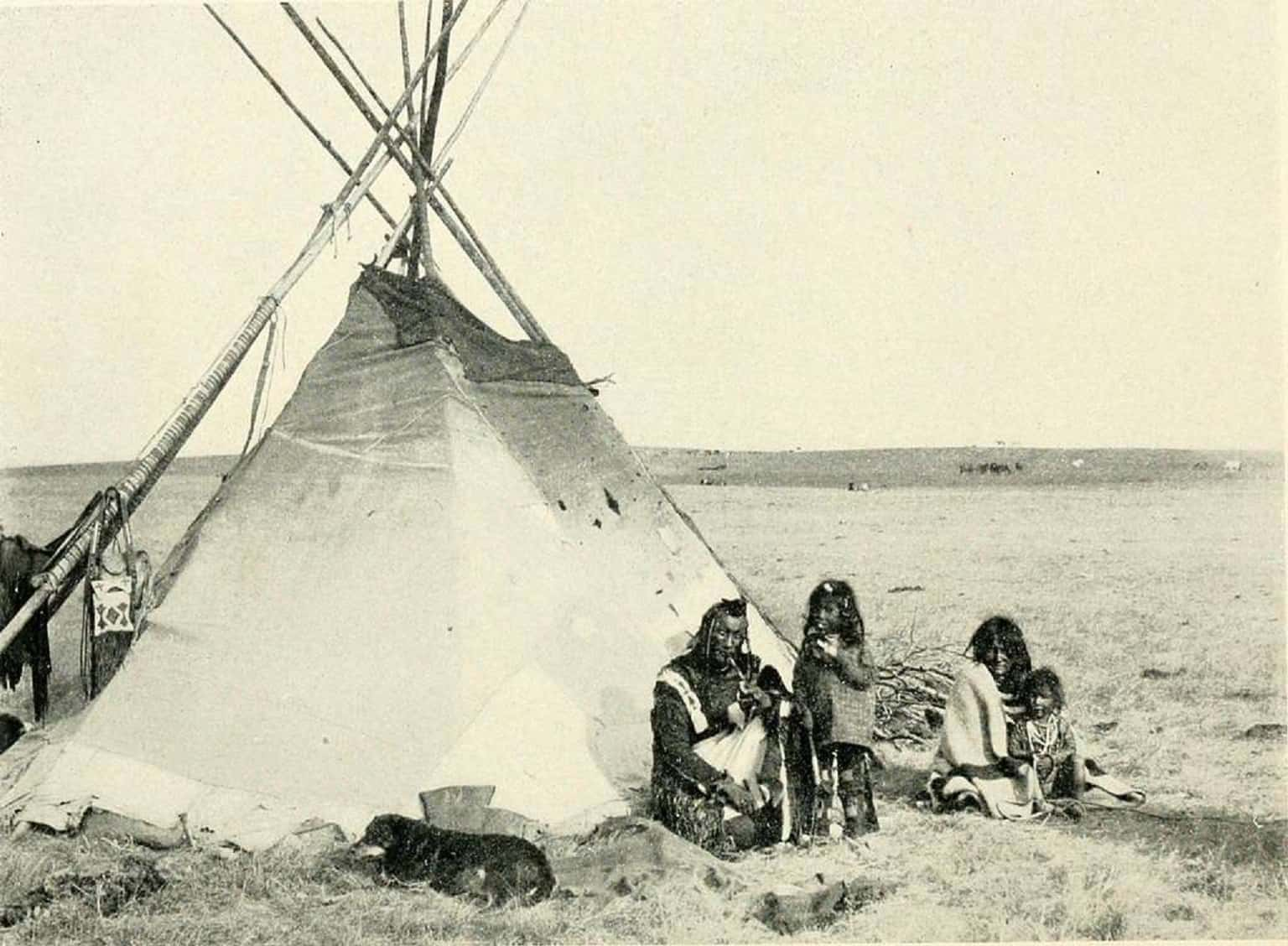Olive Oatman was one of the only survivors of a gruesome tragedy that destroyed her family. Captured by an Indigenous tribe, she witnessed the unthinkable. Sadly, her tragic losses created a twisted ripple effect—her memories haunting her right to the bitter end.
1. She Never Saw It Coming
Olive Oatman's beginnings were like any other 19th-century Mormon girl in Illinois—but little did she know, fate had a nightmare in store for her. Born in 1837 to Mary Ann and Royce Oatman, Olive grew up in a large family of seven children.
But when she was 14 years old, her family broke away from their original Mormon group—and that's when everything changed.

2. Her Family Rebelled
Olive and her family began following a new leader, James C. Brewster—but there was trouble afoot. While undertaking a pilgrimage to the border of Arizona and California, conflict and tension began to tear the group asunder.
Again, Olive watched as her parents led the rebellion. The group split in two, with Brewster choosing the northern route and the Oatmans choosing the southern route. This, however, was a tragic mistake.
 Olive Oatman: Life among the Mohave, Biographics
Olive Oatman: Life among the Mohave, Biographics
3. She Lost Hope
As the Oatman family and its following party trudged onward, Olive's father Roys became their brave leader. Unfortunately, the road to their new Holy Land was terribly bleak. The land was desolate and barren, effectively drying up everyone's hope.
Many wagons began abandoning the troupe as the climate and country turned against them. Hoping to reach the Colorado River, Olive and her family finally reached Maricopa Wells. But this was only the calm before the storm.
 Olive Oatman: Life among the Mohave, Biographics
Olive Oatman: Life among the Mohave, Biographics
4. She Met A Fork In The Road
Here, Olive’s father received a warning from the locals that Indigenous tribes ahead were highly protective of their land (as one might expect). They urged him to stop venturing forward with the family as a hostile run-in with the Indigenous citizens could prove fatal. His response, however, sealed his family's devastating fate.
 Olive Oatman, 1857 | History Revealed & Brought To Life, Mystery Scoop
Olive Oatman, 1857 | History Revealed & Brought To Life, Mystery Scoop
5. She Followed Him Into Danger
Olive's father decided not to heed the chilling warning and ignored the advice to stay back. Foolishly, he decided to step into dangerous territory. But that wasn't even the worst part.
All the other families chose to play it safe and hang back; so, it was just Olive and her family, alone and vulnerable. That being said, it was only a matter of time before it all went off the rails.
 Olive Oatman, 1857 | History Revealed & Brought To Life, Mystery Scoop
Olive Oatman, 1857 | History Revealed & Brought To Life, Mystery Scoop
6. Her Family Had A Confrontation
Just four days after leaving the rest of the group, the Oatman clan had their first encounter with the Yavapai tribe. And boy, was it a recipe for disaster. The Indigenous strangers wanted nicotine and food. However, the Oatman family was short on supplies and unprepared to part with anything. When they denied the Indigenous folks, pure chaos ensued.
 Olive Oatman, 1857 | History Revealed & Brought To Life, Mystery Scoop
Olive Oatman, 1857 | History Revealed & Brought To Life, Mystery Scoop
7. She Watched Him Perish
When you couple an unwillingness to share with an intrusion onto occupied land, you can probably imagine that things would take a left turn. That’s exactly what happened. Not only did things go left—they turned fatal.
The Oatmans' stinginess enraged the Yavapai tribe, and they lunged right for Olive's father and ruthlessly clubbed him. But this was only the beginning of the carnage.
 Olive Oatman, 1857 | History Revealed & Brought To Life, Mystery Scoop
Olive Oatman, 1857 | History Revealed & Brought To Life, Mystery Scoop
8. She Lost Her Family
Olive watched in horror as the Yavapais took down her father. But they weren't done yet. A blood bath ensued, and her pregnant mother and four of her siblings met brutal ends as well—all clubbed until their last breaths. Only three of the Oatman clan managed to survive: 14-year-old Olive, 15-year-old Lorenzo, and seven-year-old Mary Ann.
But here, Olive's story takes an even darker turn.
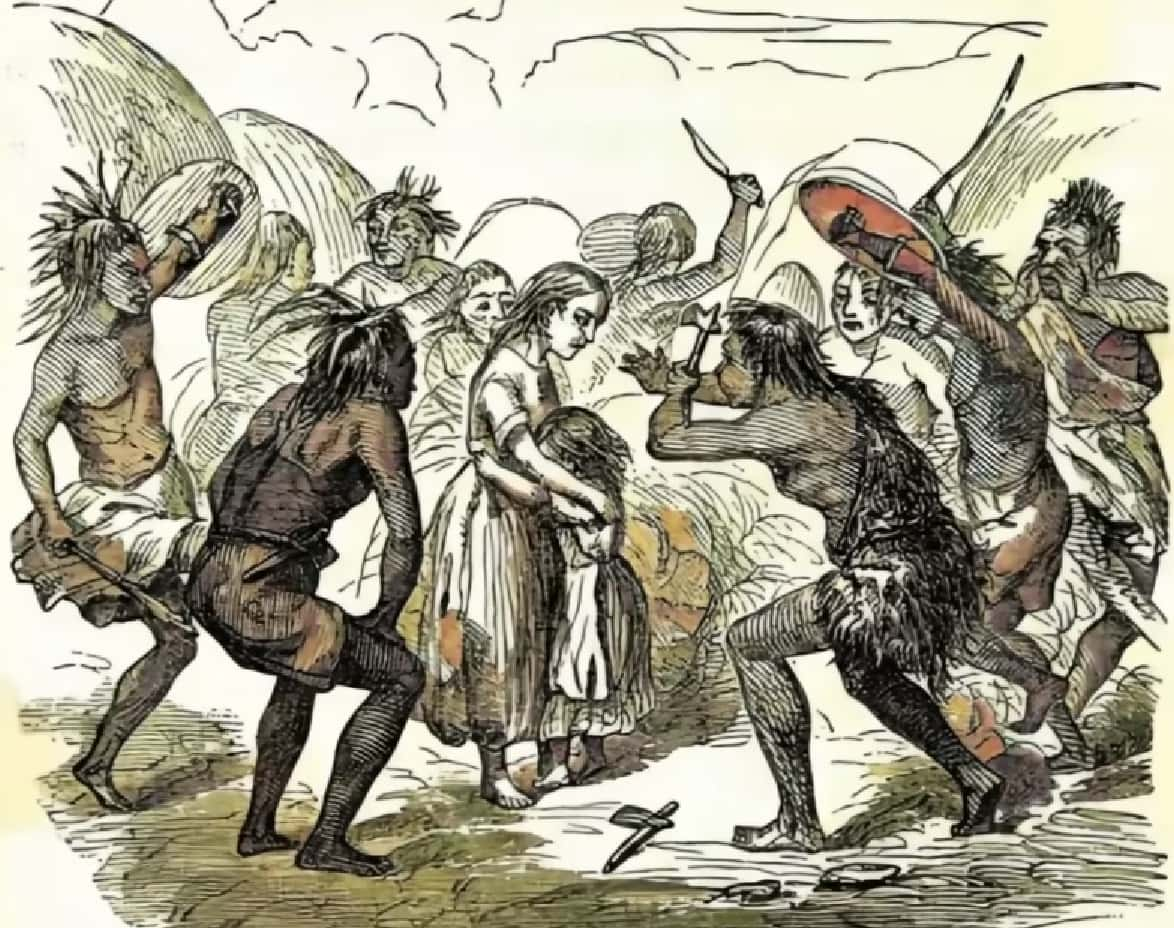 Olive Oatman, 1857 | History Revealed & Brought To Life, Mystery Scoop
Olive Oatman, 1857 | History Revealed & Brought To Life, Mystery Scoop
9. She Thought He Was A Goner
The Yavapais captured Olive and Mary Ann, but left Lorenzo behind. They expected him to perish from his wounds, but they were so wrong.
Poor Lorenzo awoke to find his entire family deceased, and two of his sisters missing. Completely alone and heartbroken, he trekked to safety. But as pushed through the pain, a burning mission began forming in the back of his mind.
 El Rapto de Olive Oatman, La Chica del TATUAJE AZUL, Estela Naïad
El Rapto de Olive Oatman, La Chica del TATUAJE AZUL, Estela Naïad

History's most fascinating stories and darkest secrets, delivered to your inbox daily.
10. She Became His Mission
While Olive and Mary Ann were at the mercy of their captors, Lorenzo made it to safety and had his injuries tended to. Eventually, he returned to the horrific scene of the slaughter and buried the bodies of his family, but the whereabouts of his two surviving sisters still haunted him. He became determined to find them, no matter what.
 Olive Oatman, 1857 | History Revealed & Brought To Life, Mystery Scoop
Olive Oatman, 1857 | History Revealed & Brought To Life, Mystery Scoop
11. She Thought She Was Done For
While her brother managed to escape, Olive and her sister weren't so lucky. After being taken by the Yavapais, Olive had no hope for survival, expecting to perish just like the rest of her family. But fate had other plans for her.
The tribe took the girls to the Harquahala Mountains and treated them in an aggressive and threatening way. And that's when they discovered their true purpose.
 El Rapto de Olive Oatman, La Chica del TATUAJE AZUL, Estela Naïad
El Rapto de Olive Oatman, La Chica del TATUAJE AZUL, Estela Naïad
12. She Was A Slave
The tribe used Olive and Mary Ann as slaves. They began carrying water and firewood, looking for food, and carrying out other menial tasks. However, the terrible treatment they endured made these chores all the more grueling. Burdened by grief, loss, and the terror of the unknown, Olive had no idea that her awful luck was about to change.
 Olive Oatman: Life among the Mohave, Biographics
Olive Oatman: Life among the Mohave, Biographics
13. She Had A Guardian Angel
Olive's life changed forever when another Indigenous group came to trade with the Yavapais—the Mohave people. When the chief's daughter, Topeka, witnessed the chilling treatment of Olive and Mary Ann, she couldn't believe her eyes. She wanted to save them and her empathy transformed her into Olive Oatman's guardian angel.
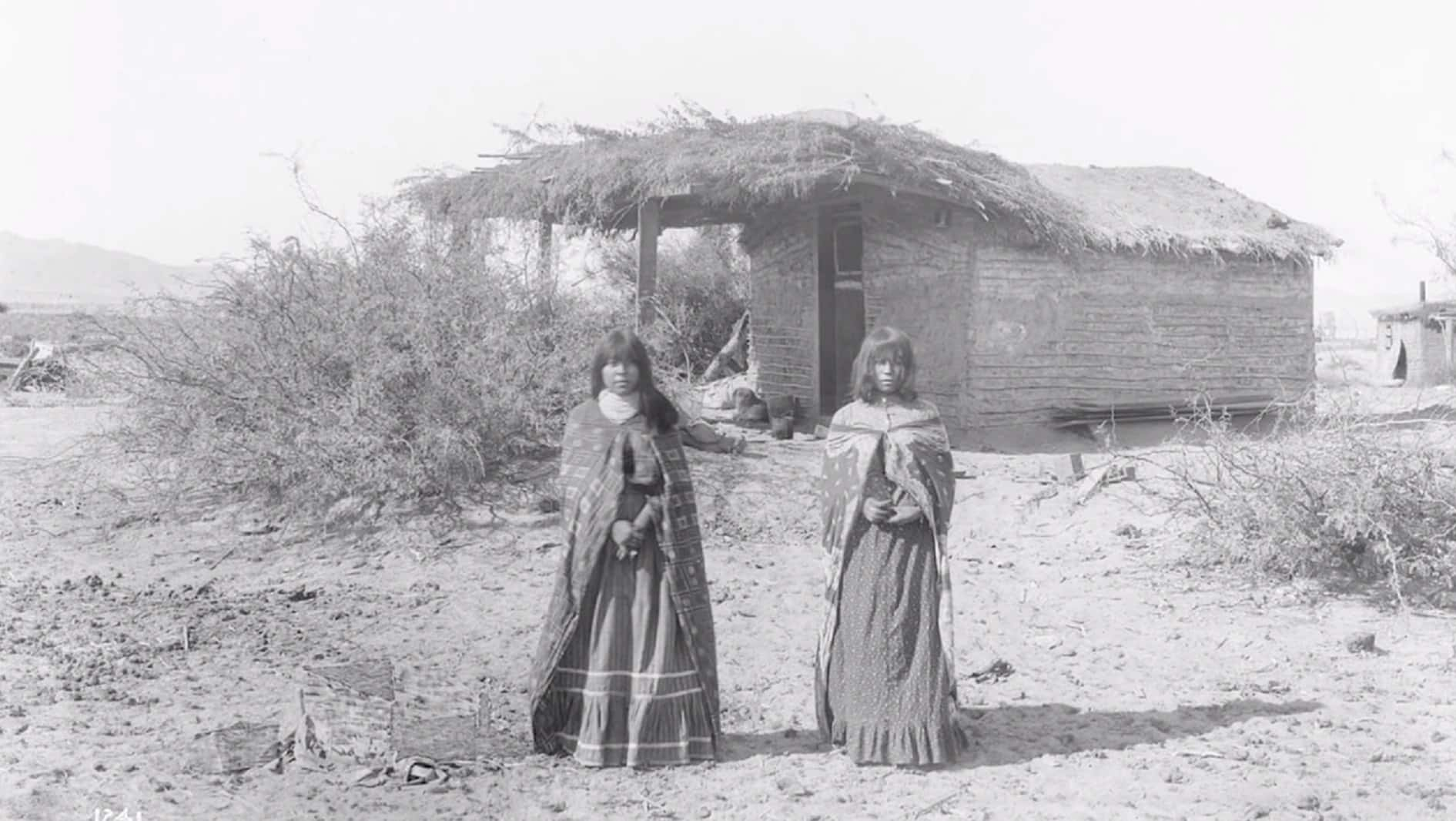 Olive Oatman: Life among the Mohave, Biographics
Olive Oatman: Life among the Mohave, Biographics
14. She Was A Bargaining Chip
Topeka, hoping to rescue the girls, tried to offer a trade for them. At first, the Yavapais seemed immovable, unwilling to part with their new slaves. However, Topeka refused to give up, and eventually, her stubbornness paid off. In exchange for Olive and Mary Ann, the Yavapais received two horses, produce, beads, and blankets.
It was a trade that swung Olive's destiny in a completely new direction.
 Olive Oatman, 1857 | History Revealed & Brought To Life, Mystery Scoop
Olive Oatman, 1857 | History Revealed & Brought To Life, Mystery Scoop
15. She Found A New Family
After finding salvation with the Mohave tribe, Olive and her sister trekked for days toward its village. Unlike the Yavapais, the Mohave tribe greeted them with openness. Chief Espaniole and his family ushered the girls under their wings, taking a singular interest in their wellbeing.
In fact, with the seeds of gratitude already planted, Olive turned a new page and made this tribe her new home.
 Olive Oatman, 1857 | History Revealed & Brought To Life, Mystery Scoop
Olive Oatman, 1857 | History Revealed & Brought To Life, Mystery Scoop
16. She Assimilated
Compared with her initial captors, Olive found the Mohaves to be far kinder. They treated her better and as time passed, she became assimilated into their way of life. A mark of this total assimilation was her given clan name, Oach. The tribe also gave her the nickname Spantas, meaning "unquenchable lust or thirst".
But this wasn't the most dramatic signifier of her new life.
 Olive Oatman, 1857 | History Revealed & Brought To Life, Mystery Scoop
Olive Oatman, 1857 | History Revealed & Brought To Life, Mystery Scoop
17. She Earned Her Life
The Mohave people gave the sisters their very own plots of land and expected them to contribute to the community just like everyone else. Olive's life turned topsy-turvy as she adopted new routines and had important duties thrust upon her.
She foraged for food and even planted and harvested her own crops, but that wasn't all.
 Olive Oatman, 1857 | History Revealed & Brought To Life, Mystery Scoop
Olive Oatman, 1857 | History Revealed & Brought To Life, Mystery Scoop
18. Her Tattoos Were Meaningful
Beyond her wild survival story, Olive Oatman is best remembered for her striking facial tattoos. The permanent marks on her chin and arms were a tribal custom. Both she and Mary Ann bore these marks and they held immense meaning.
The tattoos proved that the Mohave people did not force the girls into captivity, but instead, considered them one of their own. In lieu of the controversy that later engulfed Olive Oatman, this fact is extremely important.
 Olive Oatman, 1857 | History Revealed & Brought To Life, Mystery Scoop
Olive Oatman, 1857 | History Revealed & Brought To Life, Mystery Scoop
19. She Was Important To Them
According to Mohave tradition, their tattoos would become a powerful tool in the afterlife. When entering the land of the dead, the deceased would be recognizable to other Mohave ancestors. Slaves, on the other hand, did not bear the same tattoos. The Mohave simply weren't interested in being reunited with them, and so, didn't mark them.
Because Olive and Mary Ann bore these special tattoos, they were not considered slaves—but that wasn't the only clue to their total assimilation.
 Olive Oatman, 1857 | History Revealed & Brought To Life, Mystery Scoop
Olive Oatman, 1857 | History Revealed & Brought To Life, Mystery Scoop
20. She Didn't Want To Leave
You see, according to anthropologist Alfred L Kroeber, the Mohaves gave Olive Oatman the freedom to leave whenever she pleased. However, they refused to accompany her to any white settlement out of fear for their own lives. After all, being found guilty of keeping white women captive had its own dangers.
Olive blamed her hesitancy to leave on her poor directional skills, but like most of her story, there may have been a lot more than met the eye.
21. She Never Tried To Escape
Olive must have felt very comfortable in her new life because when a group of white railroad surveyors arrived in the Mohave Valley, her reaction was stunning.
Instead of rushing to them for help and revealing herself, she remained with her new family. The white surveyors stayed for an entire week, trading and socializing, and Olive didn't make a single peep.
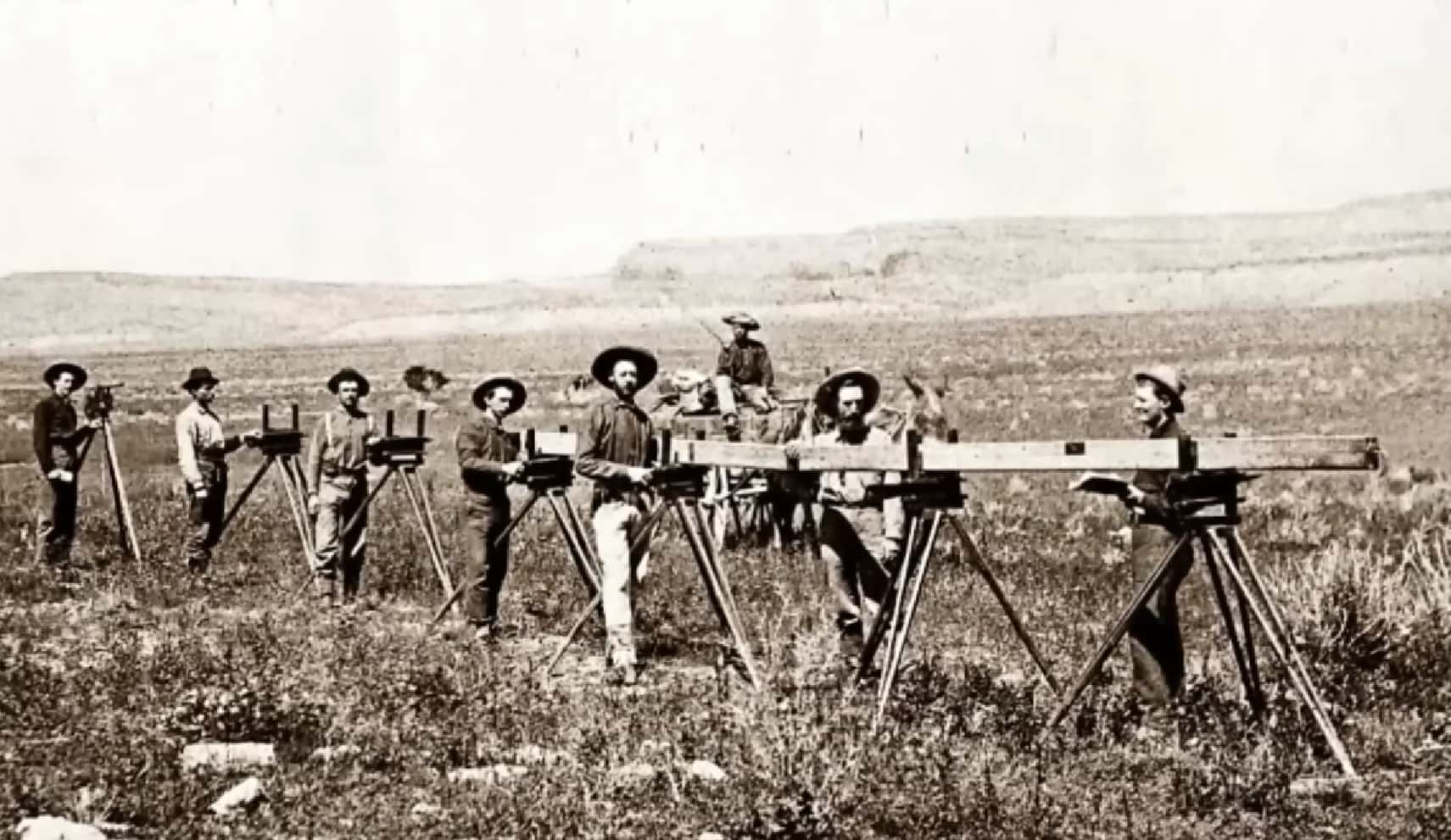 Olive Oatman, 1857 | History Revealed & Brought To Life, Mystery Scoop
Olive Oatman, 1857 | History Revealed & Brought To Life, Mystery Scoop
22. She Faced Starvation
In the mid-1850s, another tragedy befell Olive Oatman. A devastating drought ripped through the region and wreaked havoc, leaving everyone scrabbling for sustenance. The Mohave tribe struggled with food shortages and the consequences were heartbreaking. Olive's little sister was around ten years old when she became startlingly ill.
 Olive Oatman, 1857 | History Revealed & Brought To Life, Mystery Scoop
Olive Oatman, 1857 | History Revealed & Brought To Life, Mystery Scoop
23. She Tried To Save Her
Olive—having lost almost everything already—worked as hard as she could to keep her sister alive. She looked for berries, roots, and birds' eggs in the hopes of finding anything to save Mary Ann's life.
Olive worked hard to tend to the sick members of the tribe, but most especially her sister. Sadly, Mary Ann's lack of nutrition ate away at her tiny body, and Olive began to lose all hope.
 Olive Oatman: Life among the Mohave, Biographics
Olive Oatman: Life among the Mohave, Biographics
24. She Buried Her Sister
To her horror, Olive watched her sister Mary Ann starve and perish. Traditionally, the Mohave people cremated their deceased loved ones, but they made a special exception for Mary Ann. The chief's wife appealed to her husband on Olive's behalf, allowing her the freedom to do whatever she wanted with her sister's remains.
Sadly, the nightmare was far from over.
 El Rapto de Olive Oatman, La Chica del TATUAJE AZUL, Estela Naïad
El Rapto de Olive Oatman, La Chica del TATUAJE AZUL, Estela Naïad
25. She Almost Perished
Though the Mohave tribe allowed Olive to bury her sister, she herself wasn't out of the woods. In fact, Olive might have met the same early end, if not for Aespaneo—the chief's wife. With an empty belly and her strength waning, Olive let Aespaneo tend to her in her time of need, swallowing gruel just to stay alive.
These loving ministrations only created a deeper bond between Olive and the Aespaneo—one that would later be called into question.
26. She Was Different
By the time she was 19, Olive had fully surrendered to her new reality. She had new friends and connections and considered herself a part of the Mohave tribe. But there was one truth she just couldn't escape.
Olive's whiteness and true identity would always be a threat to her community. She just couldn't outrun her past—and eventually, it came knocking at her front door.
 Olive Oatman, 1857 | History Revealed & Brought To Life, Mystery Scoop
Olive Oatman, 1857 | History Revealed & Brought To Life, Mystery Scoop
27. She Became Hot Gossip
One day, a messenger named Francisco arrived with an unsettling message from For Yuma. Authorities there had caught wind of the disturbing rumor of a white girl living amongst the Mohave people. The post commander wanted the girl returned, or at least to know why she hadn't come of her own free will. This caused an absolute uproar.
 Olive Oatman, 1857 | History Revealed & Brought To Life, Mystery Scoop
Olive Oatman, 1857 | History Revealed & Brought To Life, Mystery Scoop
28. She Was Important To Them
Contact from the outsiders made the Mohaves more protective of Olive than ever before. They hid her away and tried to deny that she was the white girl in question. In fact, they argued that Olive wasn't white at all. Their affection for Olive fueled their resistance; they didn't want to return her. But in the end, it just wasn't enough.
29. They Traded Her
The messenger, Francisco, wasn't about to give up right away. Determined to get Olive back, he made another bargaining attempt. This time, there was a trade involved. But that wasn't the most deranged part. Although the Mohave accepted a white horse and blankets in exchange for Olive, fear guided their decision.
Francisco passed on a pointed threat: He told the Mohaves that the whites would destroy them if they didn't free Olive.
 Olive Oatman, 1857 | History Revealed & Brought To Life, Mystery Scoop
Olive Oatman, 1857 | History Revealed & Brought To Life, Mystery Scoop
30. She Had To Let Go
It was finally time for Olive to return to her people, but this was a hard goodbye. It was a 20-day journey back to Fort Yuma, and Topeka—Olive's original savior—joined her. Upon arriving at the fort, it became clear that Olive was not wearing suitable attire. She still wore a traditional Mohave skirt and absolutely nothing from her waist up.
It was time to strip off her new identity and don her old one.
 Olive Oatman: Life among the Mohave, Biographics
Olive Oatman: Life among the Mohave, Biographics
31. She Returned To Her People
As Olive slipped into an appropriate Western outfit, she readied herself for her grand return. When she entered the fort, screams of joy and celebration surrounded her, with people cheering from every angle. But this was a bittersweet moment if there ever was one. In fact, there's reason to believe that Olive had left far more behind than she let on.
 Olive Oatman, 1857 | History Revealed & Brought To Life, Mystery Scoop
Olive Oatman, 1857 | History Revealed & Brought To Life, Mystery Scoop
32. She May Have Kept A Secret
When Olive returned to the Western way of life, she reunited with one of her long, lost friends, Susan Thompson. Years down the road, Susan made a shocking confession about Olive. She reported that Olive grieved her forced return. Even worse? Susan claimed that Olive had left an entire family behind.
33. She Sparked Wild Rumors
The stories surrounding Olive's life with the Mohave people are often hazy, but her close friend Susan claimed that Olive had been married and even had two sons. However, Olive denied every rumor about a possible romance with a Mohave man. In fact, according to her, she had never slept with an Indigenous man in her life.
 Olive Oatman, 1857 | History Revealed & Brought To Life, Mystery Scoop
Olive Oatman, 1857 | History Revealed & Brought To Life, Mystery Scoop
34. She Was Chaste
Olive Oatman later declared, "to the honor of these savages let it be said, they never offered the least unchaste abuse to me". However, some believe that this was a downright lie.
Her nickname, Spantsa, could have meant "rotten womb," implying that she may have been intimately active yet infertile. Historians, on the other hand, believe her name could have had many meanings.
35. She Made A Shocking Discovery
Integrating with the white folks at Fort Yuma was already a culture shock for Olive, but the biggest surprise was yet to come.
Only a few days after arriving, she discovered that her dear brother Lorenzo had miraculously survived and had been looking for her this entire time. When they finally reunited, their heartfelt meeting made headlines everywhere throughout the West. But this certainly wasn't the end of Olive's story.
 Olive Oatman, 1857 | History Revealed & Brought To Life, Mystery Scoop
Olive Oatman, 1857 | History Revealed & Brought To Life, Mystery Scoop
36. She Told Her Story
In 1857, a new character entered Olive's life—a pastor named Royal Byron Stratton. He'd heard about the Oatman massacre and believed that this horrifying story was tailor-made for great literature. And boy was he right.
Stratton wrote Life among the Indian: or, The Captivity of the Oatman Girls Among the Apache & Mohave Indians. It was an instant hit and became a bestseller. But there was also a dark side to this publication.
 Olive Oatman, 1857 | History Revealed & Brought To Life, Mystery Scoop
Olive Oatman, 1857 | History Revealed & Brought To Life, Mystery Scoop
37. She Colored The Truth
Although Olive had lived amongst the Mohave and chose to stay with them, Stratton's novel told a very different story. In it, Olive claimed that she and her sister were held by the Mohave against her will and that she felt terrified to leave. There's a good chance that Stratton influenced this particular account, coloring the truth for the sake of sensationalism.
Of course, Olive played along with any falsehoods the novel spouted.
38. She Blurred Fact And Fiction
Olive's exaggerated claims and blatant lies helped her sell tickets, but did a disservice to the Mohave people. She told everyone that her tattoos signified her enslavement and called the Mohaves "savage masters" who disfigured her against her will. Stratton no doubt supported the embellished retelling and offered Olive a delicious incentive in return.
 Olive Oatman, 1857 | History Revealed & Brought To Life, Mystery Scoop
Olive Oatman, 1857 | History Revealed & Brought To Life, Mystery Scoop
39. She Was A Bestseller
Stratton's book sold 30,000 copies and the royalties helped turned the surviving Oatman siblings' lives around. As a result, Olive and Lorenzo had the opportunity to attend the University of the Pacific. Of course, she had to do far more than just share her story. She also had to hit the road and promote the book on a book tour—and it was incredibly eye-opening.
 Olive Oatman, 1857 | History Revealed & Brought To Life, Mystery Scoop
Olive Oatman, 1857 | History Revealed & Brought To Life, Mystery Scoop
40. She Was A Curiosity
To the rest of the world, Olive Oatman's story was so horrifying, it sounded surreal. This transformed her into the perfect moneymaker—a curiosity worth every penny. Most astonishing of all was the blue tattoo on her chin. On the book tour, curious audiences could come to spectate Olive in the flesh.
In fact, Olive had a lot of "firsts" to her name, which made her all the more intriguing.
 Olive Oatman, 1857 | History Revealed & Brought To Life, Mystery Scoop
Olive Oatman, 1857 | History Revealed & Brought To Life, Mystery Scoop
41. Her Tattoos Became A Sensation
Olive Oatman was the very first white American woman to be tattooed, but that wasn't all. By promoting Stratton's book and telling her story to audiences, she also became one of the first female public speakers. At this time, feminism was still in its infancy. As a woman speaking out, Olive's name became wrapped up in the movement, whether she wanted it to or not.
But in the end, it couldn't be denied that Stratton's book blurred truth and fiction, sensationalizing Olive's nightmare. She relived it time and time again—but eventually, it began to take its toll.
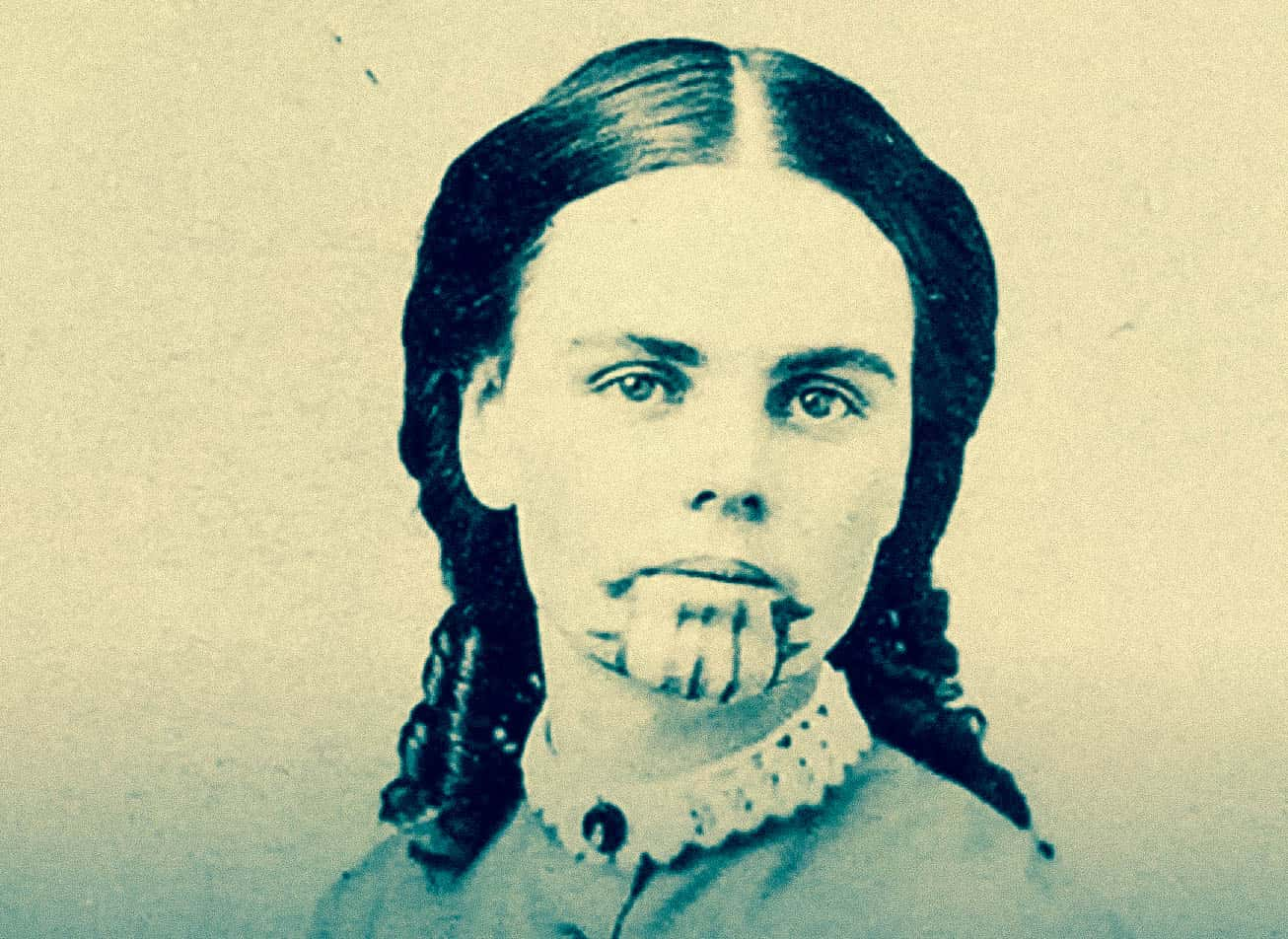 Olive Oatman: Life among the Mohave, Biographics
Olive Oatman: Life among the Mohave, Biographics
42. She Fell In Love
Although Lorenzo got fed up with hawking his sad story, Olive continued for about six years. Finally, about 10 years after returning to western society, she decided to settle down. She married a rancher named John Fairchild, settling in Texas. But before she could embark on this new chapter, she and her new husband severed the past in the most dramatic way.
 Olive Oatman, 1857 | History Revealed & Brought To Life, Mystery Scoop
Olive Oatman, 1857 | History Revealed & Brought To Life, Mystery Scoop
43. Her Husband Burned Her Books
Reportedly, Olive's husband John was not a fan of Olive's old collaborator, Stratton. He burned as many copies of Captivity of the Oatman Girls book as he could. But that wasn't all.
John likely influenced Olive's complete break with the author as well. Stratton was not welcome at the couple's wedding. He'd proven himself to be opportunistic, preying on Olive's need for financial support.
 Olive Oatman: Life among the Mohave, Biographics
Olive Oatman: Life among the Mohave, Biographics
44. She Had Scarring Memories
Now happily married, Olive had no need for Stratton—but her awful history continued to haunt her. After breaking ties with Stratton, she became incredibly tight-lipped about her time with the Mohave people. Often seen wearing a veil to cover her face, she retreated into the shadows, shy and reserved.
But though she no longer shared her story, it continued to tear her life apart.
45. Her Mental Health Faltered
The loss Olive endured at such a young age caused her to carry some serious mental distress. In her later life, she struggled with depressive episodes and was emotionally disturbed. In fact, the ghosts from her past became so overwhelming, they drove her right to the edge. On one occasion, her anguish reached a shocking climax.
 Olive Oatman, 1857 | History Revealed & Brought To Life, Mystery Scoop
Olive Oatman, 1857 | History Revealed & Brought To Life, Mystery Scoop
46. She Had A Nervous Breakdown
Unsurprisingly, Olive's mental health struggles caused her to have a nervous breakdown. For treatment, she tried everything, even traveling all the way to a Canadian medical spa in hopes of respite. But no amount of medicine or therapy could ever heal her. In fact, one of her private letters revealed an incredibly dark truth about Olive's true feelings.
 Olive Oatman, 1857 | History Revealed & Brought To Life, Mystery Scoop
Olive Oatman, 1857 | History Revealed & Brought To Life, Mystery Scoop
47. She Missed Her Parents
In 1882, Olive wrote to a friend and the letter proved that she'd never be able to let go of her gruesome past. She wrote, "I long to have my dear mother back". But that's not the saddest part.
Her parentless status affected her deeply, so much so that she busied herself with charity work that reflected her own life: She worked with orphans.
 Olive Oatman: Life among the Mohave, Biographics
Olive Oatman: Life among the Mohave, Biographics
48. She Never Worked
Olive Oatman's prosperous life was in stark contrast to her life with the Mohave people. After marrying John, she never had to work again; he made enough money to support them both. She didn't have to plant and harvest her own food or worry about starvation ever again. They lived in a large Victorian mansion and wanted for nothing...except, maybe, a child.
 Olive Oatman, 1857 | History Revealed & Brought To Life, Mystery Scoop
Olive Oatman, 1857 | History Revealed & Brought To Life, Mystery Scoop
49. She Adopted
Olive and John never had any biological children, but they did adopt a little girl who they named Mary Elizabeth and called Mamie. Olive gave Mamie the childhood she never had herself. For the rest of her life and beyond, speculation about her past continued to swirl—and there was one rumor in particular that had an unexpected twist.
 Olive Oatman, 1857 | History Revealed & Brought To Life, Mystery Scoop
Olive Oatman, 1857 | History Revealed & Brought To Life, Mystery Scoop
50. They Got It Wrong
Many believed that Olive Oatman ended her days locked up in a mental asylum. But that was horribly untrue. Instead, it was Stratton—the man she'd exiled from her life—who developed hereditary insanity and eventually passed. Even so, Olive's mental health struggles dogged her until the bitter end.
 Olive Oatman, 1857 | History Revealed & Brought To Life, Mystery Scoop
Olive Oatman, 1857 | History Revealed & Brought To Life, Mystery Scoop
51. Her Legacy Lives On
In 1901, Olive Oatman lost her last surviving family member—her brother, Lorenzo. But she quickly followed in his footsteps, succumbing to a heart attack less than two years later. On March 20, 1903—at the age of 65—she closed her eyes forever. Still, she'd never be forgotten. Today, her legacy and real-life horror story continue to shock and move modern audiences.
 Olive Oatman, 1857 | History Revealed & Brought To Life, Mystery Scoop
Olive Oatman, 1857 | History Revealed & Brought To Life, Mystery Scoop
Sources: 1, 2, 3, 4, 5, 6, 7, 8,
 Olive Oatman, 1857 | History Revealed & Brought To Life, Mystery Scoop
Olive Oatman, 1857 | History Revealed & Brought To Life, Mystery Scoop

